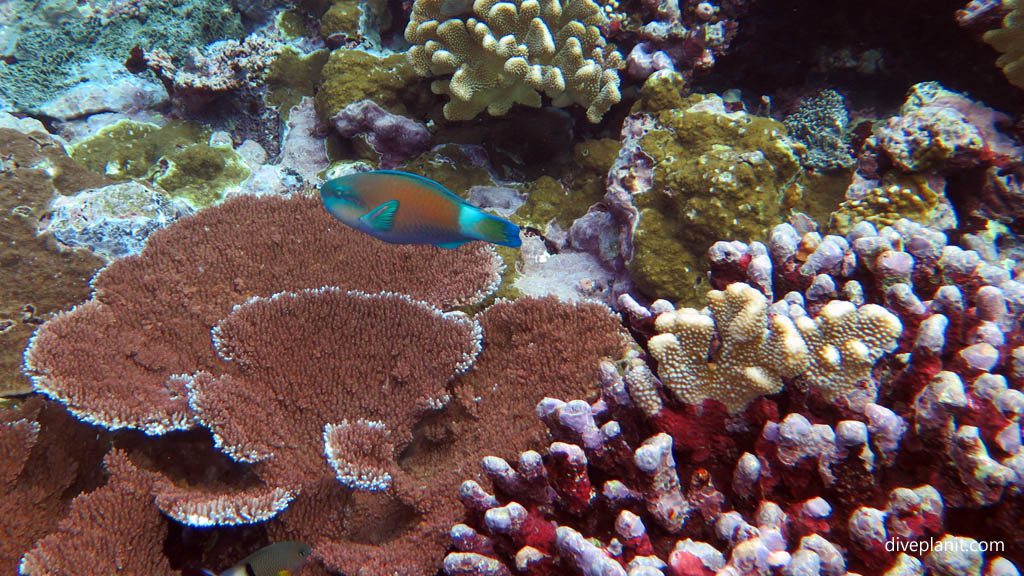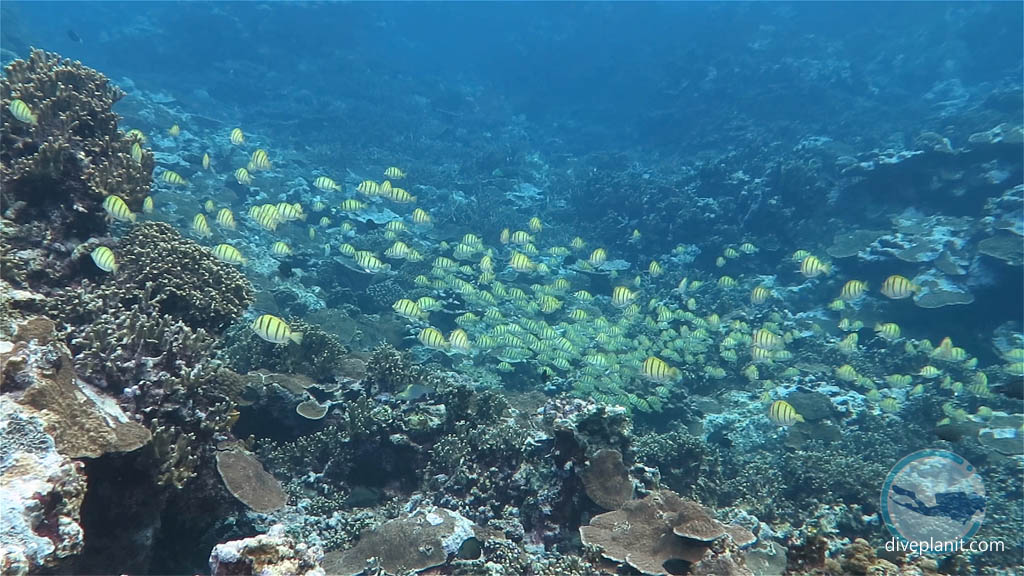There are a few reasons why you might want to dive in American Samoa: it has no fewer than six marine sanctuaries, it’s remote – but not that remote, and it has the BIGGEST CORALS IN THE WORLD!
American Samoa is an area of outstanding natural beauty, with a 3,000 year old Polynesian culture, yet the currency is the US$, English is the first language and it’s closer than the Cook Islands!

Tutuila, the main island lies a little further east of Samoa, less than an hour’s flying time. It offers a variety of dive sites from shallow bays laden with healthy reef ecosystems, to reef walls that fall away to unfathomable depths. It is home to three marine sanctuaries. The longest established is Fagatele Bay, which has been a no-take area since 1986.

All the coral is in impeccable condition, like grandma’s fine bone china, not a breakage, chip or scratch. Large numbers of reef fish keep the corals clean of algae, and hence healthy – an ecosystem in perfect balance. Over the years, over 270 species of fish and over 150 species of coral, have been counted in the one bay.

The next bay over: Fagalua / Fogama’a which allows only for subsidence fishing by local villagers, is likewise home to pristine coral crowns and a myriad of reef fish.
There is also a Marine Protected Area (MPA) on nearby Aunu’u – a beautiful island, just a mile across and a 20 minute ferry ride from the south eastern tip of Tutuila. The MPA here is zoned into a multi-purpose zone and a research only zone. This kind of sanctuary is important because it provides a baseline of what a coral reef, removing all the influence of mankind, should look and be like. A yardstick, if you will, to measure how badly other reefs which are subject to urban run-off, overfishing and pollution, are faring.

All the Marine Sanctuaries on Tutuila can be scuba dived, either from the shore or from a charter boat. There are also many other sites around Tutuila, where you can shore dive: simply swim across the shallow fringing lagoon, to the reef edge beyond.

It is on the nearby island of Ta’u that the world’s largest corals have been discovered. Standing some 7 m and 8 m wide these large boulder corals, are thought to be some +500 years old. Here’s a short video shot by the Catlin Seaview Survey.
The marine park can be dived by recreational divers on a day’s boat trip from Tutuila.
Learn more about this amazing place and its marine sanctuaries.




Wonderful how in at 02:29 , in calm, no current conditions, a diver fin tips the largest head in the ocean…did the SB2 catch that? C’mon guys, buoyancy control and awareness.
